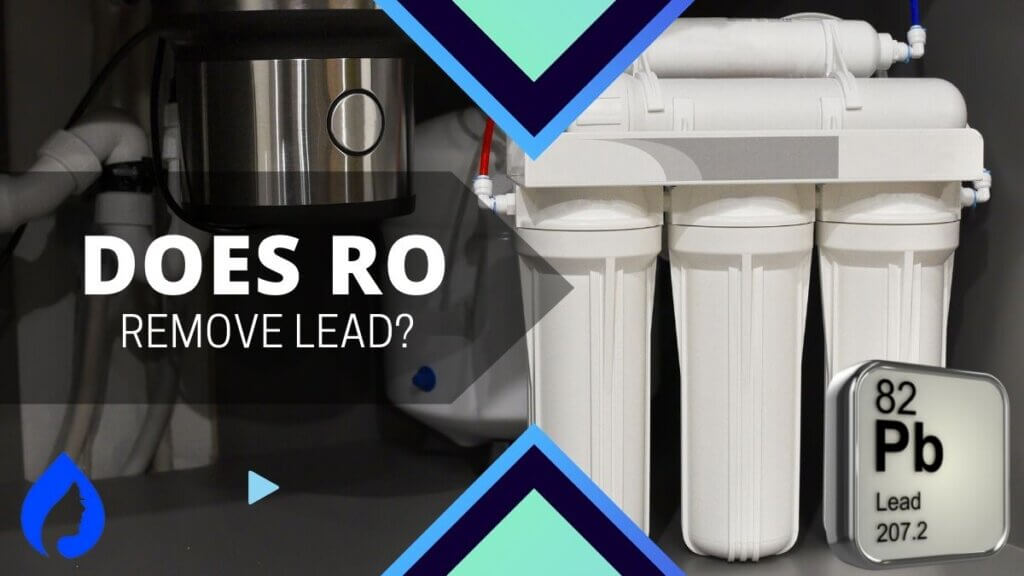
An RO water filter (that allows the water to pass through a semi-permeable Reverse Osmosis membrane), you can effectively remove lead from water in an easy and budget-friendly way.
Sorry to break it to you, but:
Lead is no more considered a “miracle metal” as exposure to lead in water is proven to induce adverse effects in humans, such as
Don’t believe me? Stick around, and I’ll answer your question with credible facts and deep research.
Does Reverse Osmosis Remove Lead & Other Heavy Metals From Water?
Yes, the reverse osmosis process can effectively remove lead and other heavy metals from water and improve water quality.
I use a Reverse Osmosis water filter at home and am happy to confess that after installing the RO system, I no longer have to face the problem of lead in my water anymore. An RO system is powerful enough to remove lead from your household water and gives you clean water.
Do you want to discover how a Reverse Osmosis system provides you with clean drinking water? Wait, I will illustrate it to you.
How Does RO Remove Lead & Other Heavy Metals?
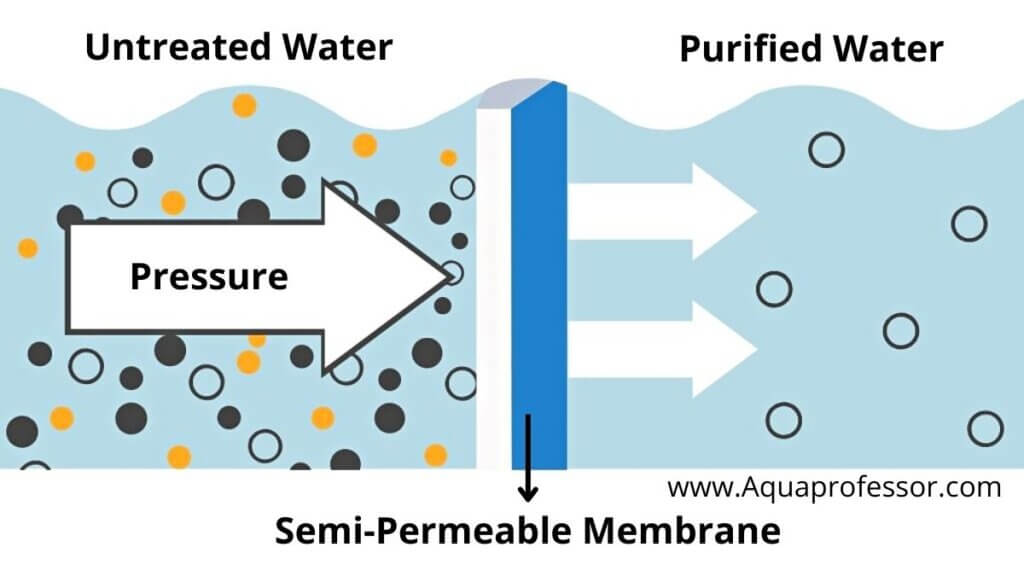
The reverse osmosis technology forces the water through a semi-permeable membrane (that comprises tiny pores) at increased pressure. These tiny pores permit the water to move through it, thus separating lead from water.
RO systems also contain an efficient activated carbon filter in it. This carbon filter is formulated for removing lead (a health threat) through adsorption, ionic bonding, and physical pore size.
The activated carbon pores in the carbon filter are designed to attract contaminants, for example, lead and chlorine, and prevent these substances from traveling into the water.
The carbon filter of an RO system removes about 95% of lead, and the rest eliminates the remaining lead.
As the water passes through the activated carbon filter of the machine, it is again tested by the RO membrane, which removes the remaining portion of the lead. A RO membrane can remove increased levels of lead and other contaminants, such as heavy metals, volatile organic compounds, chemicals, etc.
Here’s the fun fact:
The lead molecules are larger than tap water molecules, so it becomes impossible for lead molecules to breach the semi-permeable membrane.
So what do the lead molecules do, then? They bounce back, not against the reverse osmosis but from the RO’s semi-permeable membrane and are flushed into a drain full of wastewater.
In short, lead molecules surrender in front of the might of reverse osmosis
How Much Lead Can RO Remove (Estimates)?
The Reverse Osmosis filtration system can eliminate more than 99% of lead in water. This makes reverse osmosis the best of all other lead removal techniques (including that of a single-activated carbon filter that removes only 95% of lead).
List Of Contaminants RO Can Remove Other Than Lead
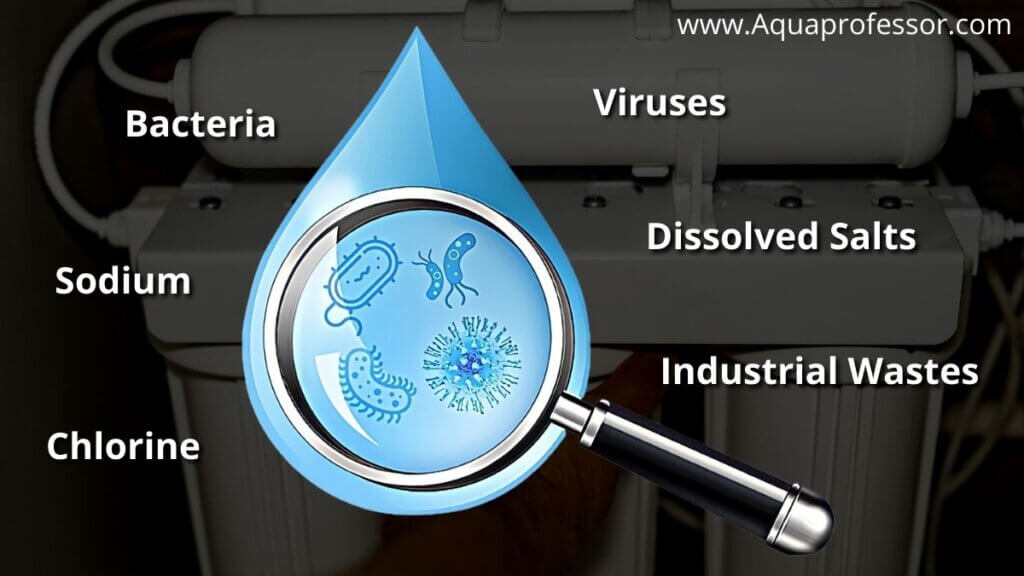
Reverse Osmosis can also remove many more contaminants apart from lead. Its filtration system can eliminate about 99.9% of
It can also remove contaminants such as:
All these harmful contaminants are difficult for any other water treatment technologies to remove.
Also Read: Microplastics In Drinking Water
Why Is Lead In Water Bad For You? [Lead Testing]?
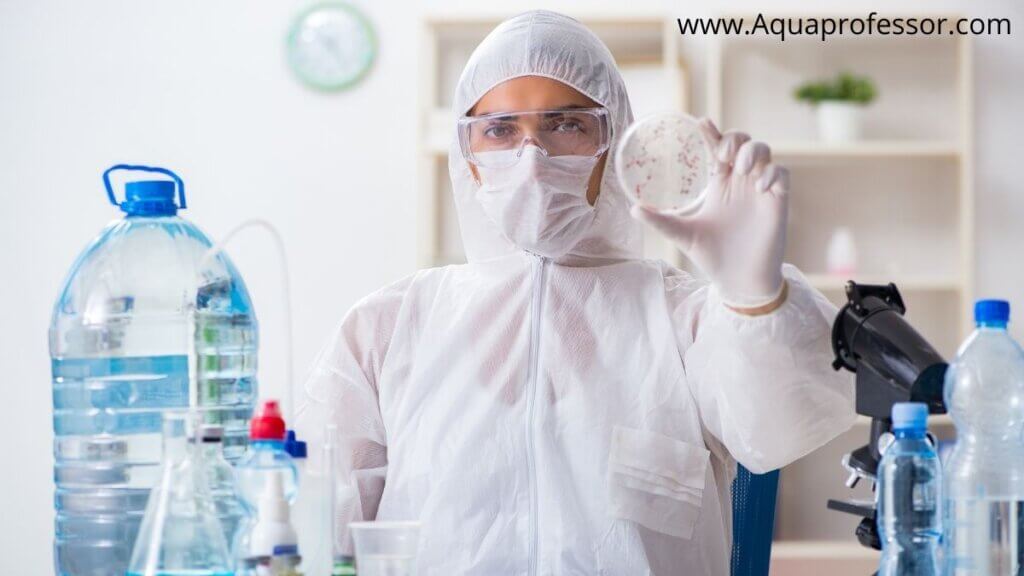
Though once considered a “miracle metal,” lead is proven harmful to children and adults. Yet, people have considered lead a blessing for five centuries. It’s because lead is malleable, can be rolled into tubes, and can easily be used for plumbing work and repairs.
Also, people used sugar of lead (lead acetate) as a direct additive for winemaking. They did that to control fermentation. Besides, lead has also been used for printing, making “beautiful” leaded glasses lead alloys, paints, pipes, cosmetics, furniture, etc.
But, now, EPA has declared that no lead level is safe for children. It also harms adults and causes lead poisoning and all disorders attached to it.
Still, lead is used today for various purposes, for example, making lead batteries that provide power to various hospitals, cell towers, railroad crossing gates, etc. Not to mention, lead possesses the power to start almost every car, boat, bus, and motorbike.
The difference is that today the metal lead is used very carefully and with complete protection than before. Though lead, even in 2024, presents an insidious threat to public health, its present-day usage is designed not to cause irreparable damage thanks to its controlled uses.
5 Harmful Effects Of Lead In Water

Any level of lead in water can result in the following disorders:
Gastrointestinal Symptoms:
Lead poisoning may result in gastrointestinal symptoms that include chronic as well as recurrent abdominal pain, weight loss, nausea, anorexia, vomiting, constipation, and bloating.
Brain Damage:
Exposure to lead can result in cerebral edema. As a result, the person suffers from extreme intracranial pressure, encephalopathy, and irreversible brain damage.
Kidney Damage:
Lead exposure in large quantities may also result in Kidney damage. Its symptoms are the visibility of protein (called albuminuria) in the urine, high blood pressure, and a heightened risk of gout.
Reproductive Problems:
Lead exposure results in the impairment of hormonal synthesis and impacts female reproduction by reducing fertility potential, amending hormonal production, affecting pregnancy and its outcome, impairing menstruations, delaying conception time, etc. Besides, it also develops unexpected problems in men.
Cancer:
Lead has been tested on various animals, and it has been found that it is carcinogenic, at least for animals. It’s weakly mutagenic. However, in vitro, it impedes DNA repair and functions synergistically with different mutagens.
Common Sources Of Lead In Water
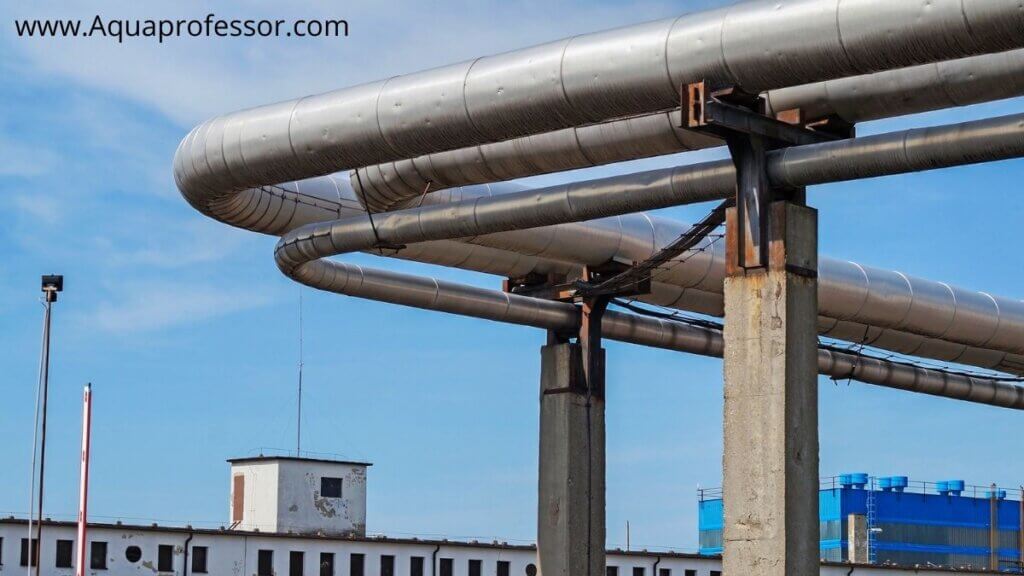
Lead normally enters the drinking water from the following:
Testing For Lead
Lead is a metal that cannot be detected by seeing, smelling, or tasting when dissolved in water. This is because lead is tasteless and odorless. So, the only way to detect lead in water is by testing it in certified labs. You can find such laboratories in your state or a regional drinking water authority.
The cost of the lead test will range from $20 to $100. In addition, your water supplier may give you detailed information on your home’s service connector and whether it is made up of lead.
7 Ways To Reduce Lead In Drinking Water
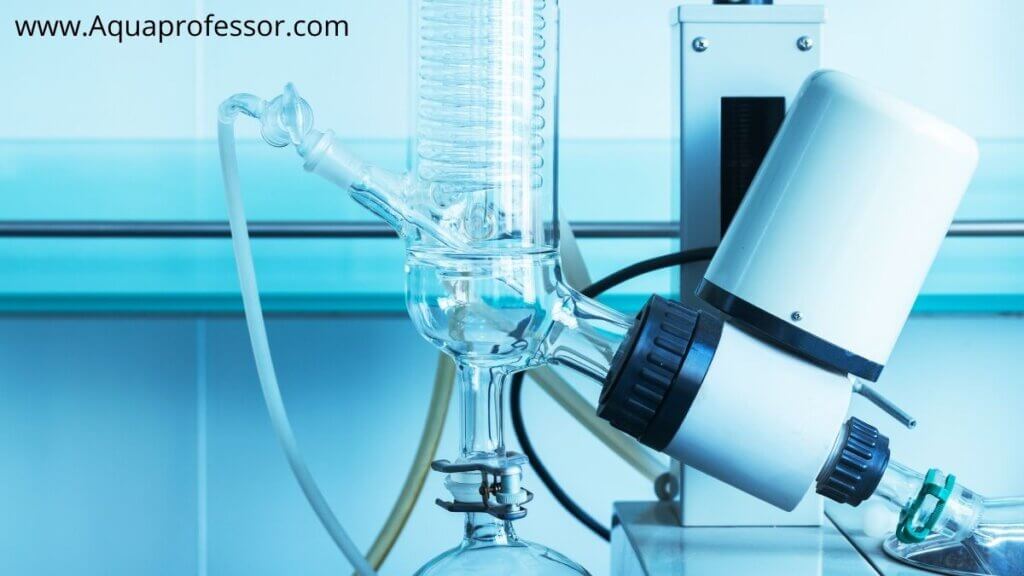
First things first: boiling does not reduce lead in water; it rather increases lead contamination.
Go through this table and learn more about reducing lead in drinking water.
| Methods | Effectiveness | Cost | How easy to execute |
| Distillation | Effective | $15 to $200 (Price of the water distilling apparatus) | Moderately easy |
| Using carbon filters | Very much effective (removes about 95% lead from water) | $300 to $950 | Moderately easy |
| Using NSF-certified bottled water | Very Effective | Approximately $1.50 per 20-ounce bottled water | Very Easy |
| Cleaning the faucet’s screen | Effective | Zero cost (only the minimal price of the cleaning liquid) | Very Easy |
| Using cold water | Effective | Zero cost | Very Easy |
| Running your faucet to flush out stagnant water | Very effective | Zero cost | Very Easy |
| Removing your lead pipes | Very effective | Depends on how many pipes you are required to remove and replace | Difficult |
Does Distillation Removes Lead?
Through distillation, water gets heated and converted into steam. It removes water vaporizers, minerals, and various solid contaminants, including lead.
Is This Process Effective?
Yes, distillation is effective in removing lead.
How Much Does It Cost?
Depending on the material and brand, the water distilling apparatus costs between $15 and $200.
How Easy Is The Process?
The distillation process of water is moderately easy provident you have fundamental knowledge.
Do Carbon Filters Remove Lead?
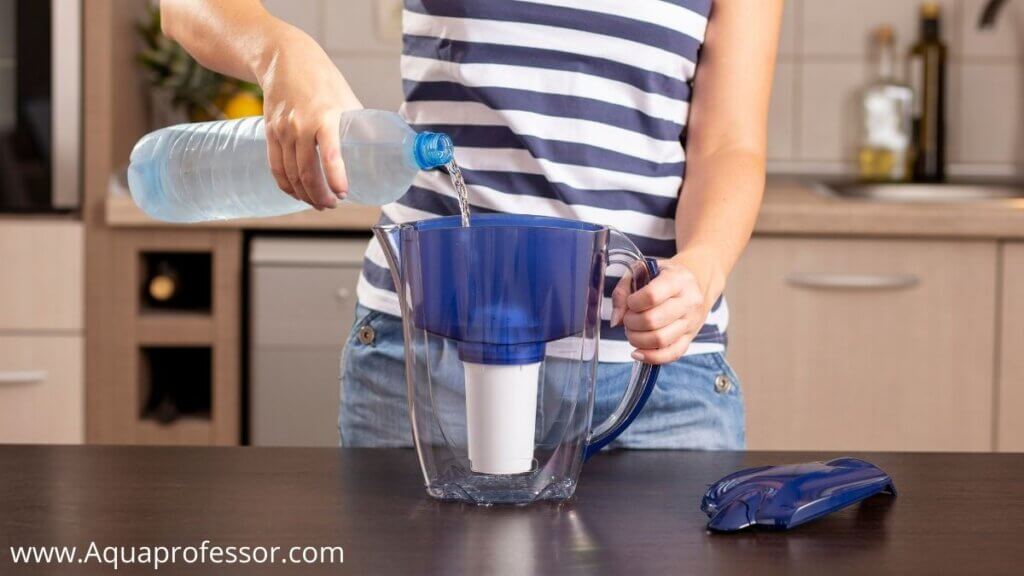
Yes, activated carbon filters comprise a lot of surfaces and force the lead particles to attach to that surface. There are three carbon filters:
Is This Process Effective?
Yes, carbon filters are very much effective in removing lead. It removes about 95% of lead from your drinking water.
How Much Does It Cost?
An activated carbon filter costs between $300 and $950, depending on the material and brand.
How Easy Is The Process?
This lead removal process is moderately easy. You can take professional help for effortless installation.
Using NSF-Certified Bottled Water
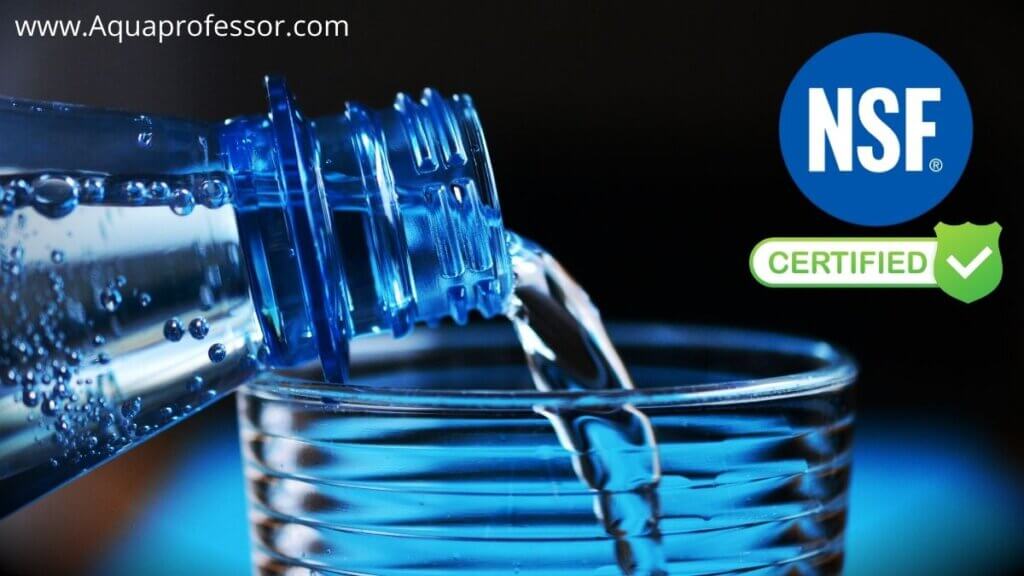
The water in NSF-certified bottles comes filtered and is usually free from most harmful contaminants, including lead. So, it is fit for drinking.
Is This Process Effective?
Yes, it is very effective.
How Much Does It Cost?
Each 20 ounce of bottled water costs approximately $1.50.
How Easy Is The Process?
This process is very easy, and you get the water readymade in hand because the filtration process has already been done before the water packaging in the bottles.
Cleaning The Faucet’s Screen:
Cleaning the aerator or your faucet’s screen is also very helpful in removing lead.
Is This Process Effective?
Yes, it is effective.
How Much Does It Cost?
This process doesn’t cost anything.
How Easy Is The Process?
The process is very easy and involves only cleaning.
Using Cold Water:
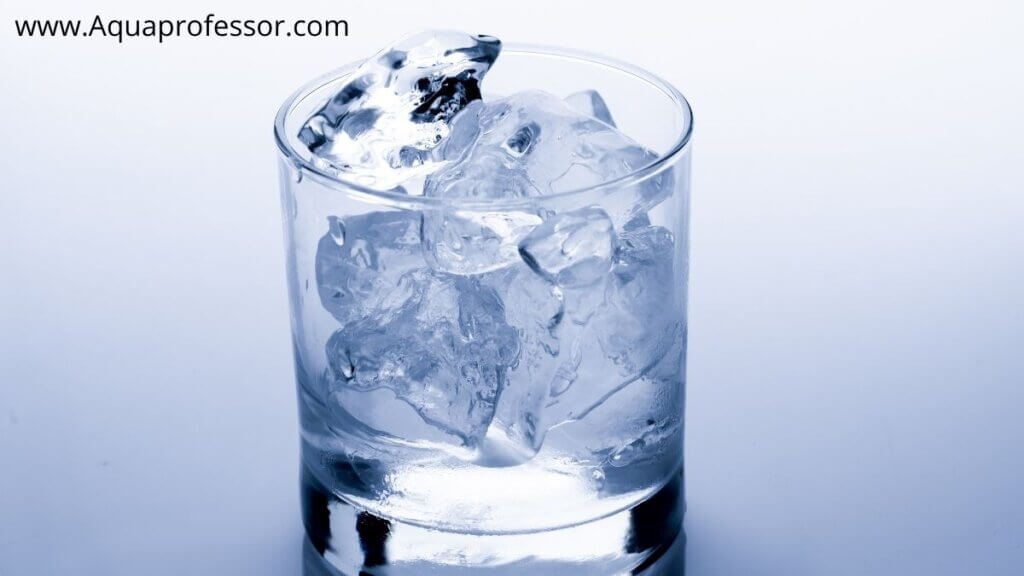
Since hot water increases the lead content in water, it is recommended that you simply use cold water for drinking and other purposes.
Is This Process Effective?
Yes, it is effective.
How Much Does It Cost?
This process doesn’t cost anything.
How Easy Is The Process?
The process is very easy.
Running Your Faucet To Flush Out Stagnant Water:
Since lead may sometimes get stored in stagnant water inside the pipes, especially if you use lead pipes, it is always recommended to flush out stagnant water from your faucet before using it.
Is This Process Effective?
Yes, it is very effective.
How Much Does It Cost?
This process doesn’t cost anything.
How Easy Is The Process?
The process is very easy.
Removing Your Lead Pipes
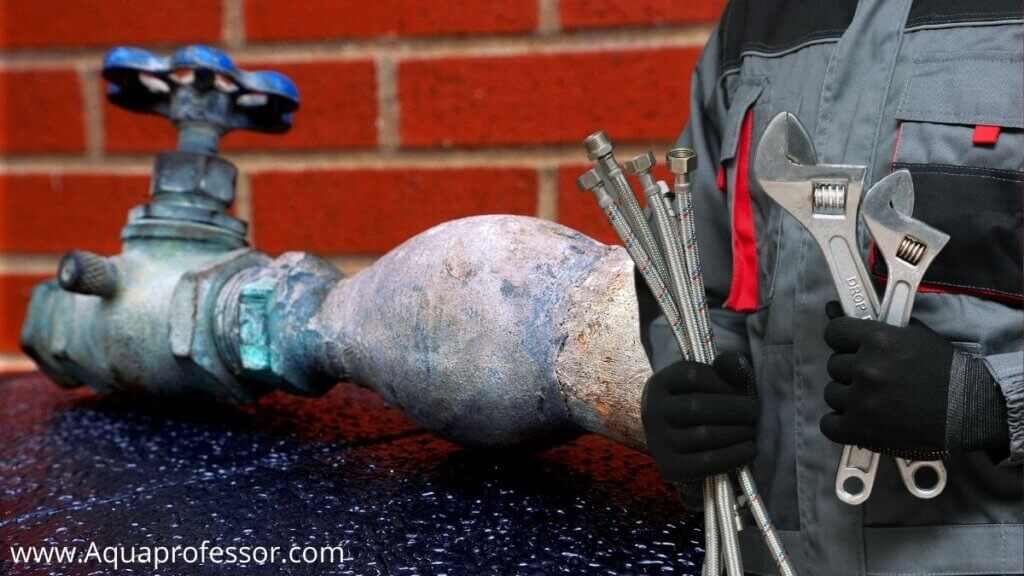
Though it has been declared by the higher authority that lead is harmful to everyone, some areas of plumbing systems still use lead pipes for water supply. Therefore, it is best to remove those lead pipes and replace them with pipes of other materials.
Is This Process Effective?
It is very effective as it will save you from lead poisoning.
How Much Does It Cost?
It depends on how many pipes you are required to remove and replace.
How Easy Is The Process?
The process is a bit difficult as you have to involve your plumber to execute this process.
3 Things To Consider Before Buying A RO System For Lead Removal
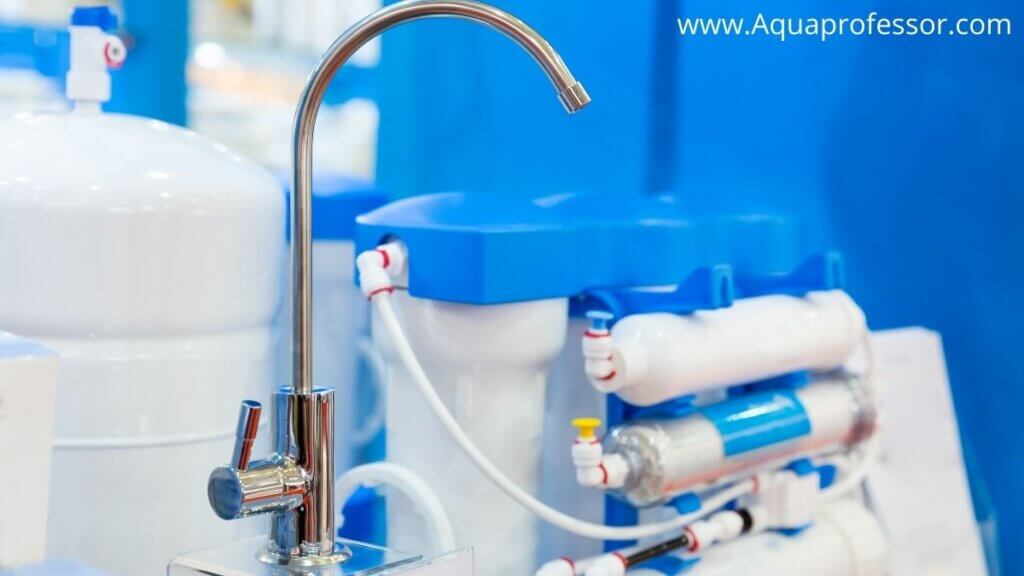
Installing a reverse osmosis system in your home is one of the best ways to lead removal from your drinking water. It’s an effective method of getting fresh water free of different contaminant particles. But, there are 3 main things to consider before buying a RO system.
Choose The Correct RO System Type:
There are two main varieties – countertop RO and under-sink RO. An under-sink RO filter is fitted under your kitchen sink, while the countertop RO filter is fixed either standalone or in connection with your faucet, along with a flexible hose. An under-sink RO unit requires a great level of intrusive installation, which a countertop system doesn’t require. A countertop RO-filtered system is either tank-based or tankless.
Check Certifications:
There are NSF certifications to authenticate the claims made by water filtration brands. Also, cross-check the certifications claim from NSF official website.
Take Professional Help:
A RO system’s installation process is more complicated than the installation system of other normal water filters as it requires a storage tank and a drain line for complete installation. So, it’s better to hire a professional for this purpose.
A RO water filter can cost hundreds of dollars, depending on the quality and brand, compared to other filters or water softeners. But, as discussed in this guide, it is an effective option for removing lead and other contaminants from water.
Does Reverse Osmosis Remove Lead From Water FAQs
What is not removed by reverse osmosis?
A RO system cannot remove bacteria or viruses from water effectively. Once a bacteria enters the Reverse Osmosis system, it rapidly grows in the pre-filters of the RO system and thus erodes its membrane over time.
What are the cons of using RO?
The Cons Of Using Reverse Osmosis Filters Are:
1) It wastes water during filtration.
2) It is more expensive than other water filters.
3) A RO removes all types of minerals (also healthy minerals) from household drinking water.
4) Reverse Osmosis water filtration installation is difficult and requires a professional.
Does lead occur naturally in water?
No, lead doesn’t naturally occur in drinking water. It’s a toxic and heavy metal, usually found within the earth’s crust’s mineral deposits, and enters the drinking water using lead pipes and class-based solders. Besides, it also comes from contaminated water’s place of origin.
How Common Is Lead In Drinking Water?
According to the estimation of EPA, people usually get their exposure to 20% of lead from drinking water. Besides, 40 – 60% of lead enters the children’s bodies from drinking water mixed with formula milk.
How Do I Know If My Water Pipes Are Made Of Lead?
You can test your pipes by gently scratching the pipe’s surface with a coin. The soft, silver and easy-scraped nature of the pipe confirms that it is made of lead. Besides, lead pipes have a bulb-like shape near their shutoff valve that appears like a snake that has gulped an egg.
Adarsh is a Health & Nutrition Sciences graduate with expertise in environmental health. He is associated with ventures like Glacier Fresh Filter and Simpure Filter Systems. Through Aqua Professor, he intends to provide helpful information to every home to help them make smarter decisions.
